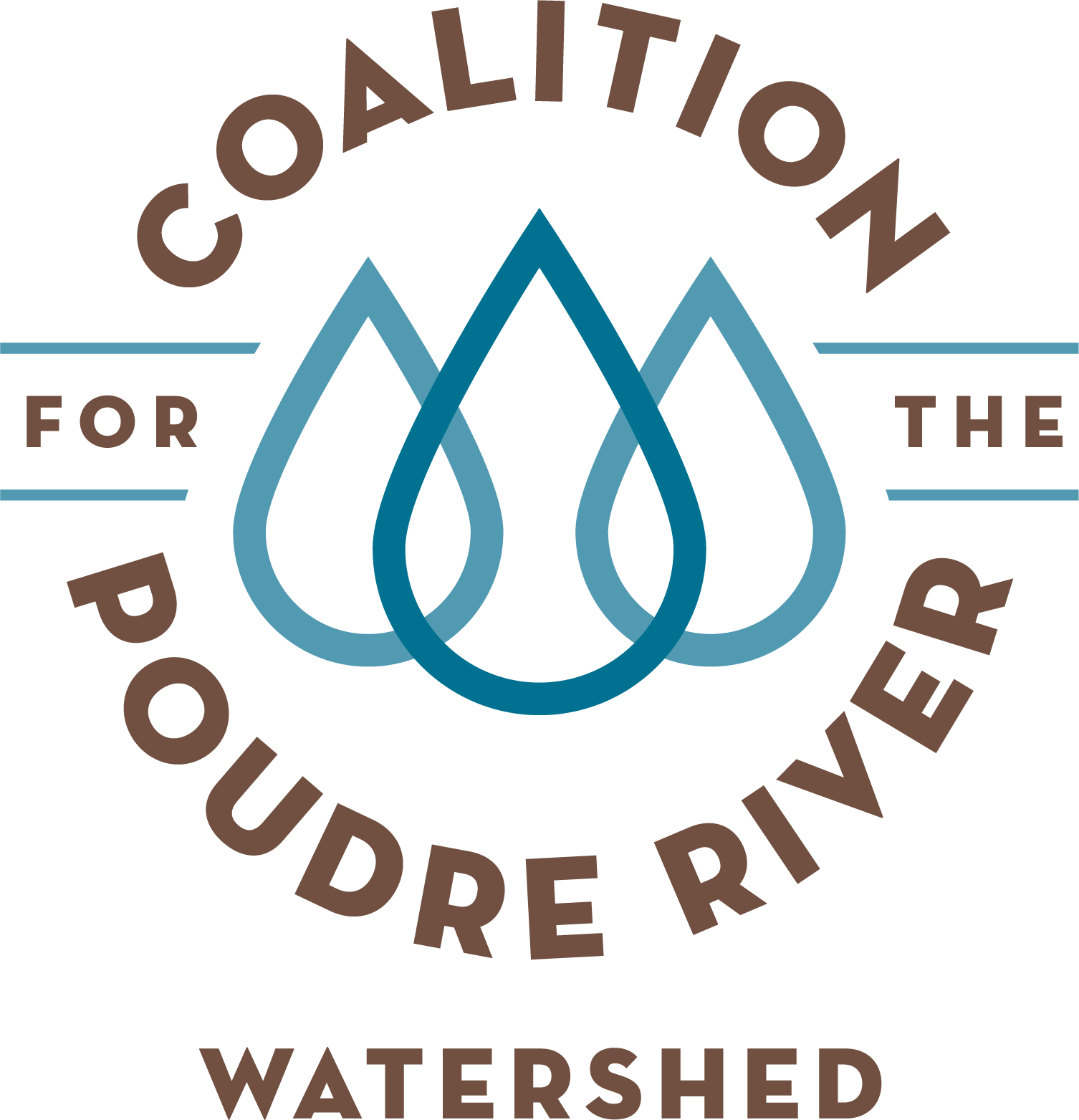Cameron Peak Fire Recovery & Restoration
Program Overview
Engineered log jams at the S. Fork project.
“Wildfires affect almost all runoff processes within a watershed including infiltration, evapotranspiration, and landscape roughness, generally resulting in more rapid runoff and larger runoff volumes. This increase in runoff volumes and velocities substantially increases sediment yields (USDA, 2016). Typically, a fire-affected watershed requires 10 years to recover hydrologically from the wildfire. Because these effects are most pronounced in the first few years of watershed recovery, emergency mitigation efforts are essential to protect valuable resources from debris flows and debris floods (Robichaud et. al., 2010).” – Cameron Peak Fire: 2022 Point Mitigation Priorities, Concepts, and Implementation, Ayers & Associates
The purpose of CPRW’s post-fire recovery and restoration work is to mitigate the negative impacts of the Cameron Peak Fire to high priority watershed values, including water quality and supply, river ecosystem function and health, and community protection and resilience.
CPRW and partners are implementing a mosaic of post-fire treatments at a landscape scale to mitigate impacts in the highest priority sub-drainages of the burn area.
Program Contact
For questions about post-fire restoration please contact Taryn Contento, Post-Fire & Rivers Project Manager, taryn@poudrewatershed.org
Program Goals
Protect water quality, riverscape health, water supply, and downstream infrastructure, with a primary focus on achieving landscape-scale mitigation in high-priority drainages in the watershed.
Engage and empower private landowners
Leverage conservation corps and volunteer labor
Work with research partners to ensure the effectiveness of post-fire restoration work and assess and adapt our projects to meet our program goals.
Aerial mulching and proposed and completed post-fire mitigation work in the Cameron Peak burn area (Ayres Associates).
CPRW Post-Fire Restoration Projects
Aerial Mulching
Mitigating negative impacts of wildfire to high priority watershed values.
River Restoration
Restoration projects to protect Poudre River water quality and supply.
Reforestation
Regenerating tree cover in the wake of high-severity wildfires.
Post-Fire Watershed Hazard Analysis
The Post-fire Composite Hazard Ranking combines four components (Soil Burn Severity, Hillslope Erosion, Debris Flow Hazard and Composite Roads Hazards) by numerically combining their rankings for each small watershed and then re-categorizing the results. The Post-fire Composite Hazard Ranking is used as the basis for targeting small watersheds for post-fire treatments.
This map uses 2022 burn severity adjustments, reductions for 2021 treatments, and increases for point mitigation.
2022 Cameron Peak Fire Post-fire Hazard Composite Ranking Map (JW Associates)
Funders
Natural Resource Conservation Services (NRCS) - Emergency Watershed Protection Program
City of Greeley
City of Fort Collins Utilities
Larimer County
Mossy Earth
Private Donors
Partners
City of Greeley
City of Fort Collins Utilities
Big Thompson Watershed Coalition
Larimer Recovery Collaborative
Larimer County Conservation Corps
Wildlands Restoration Volunteers
United States Forest Service
Ayers Associates
JW Associates
AloTerra Restoration Services
Private Landowners






